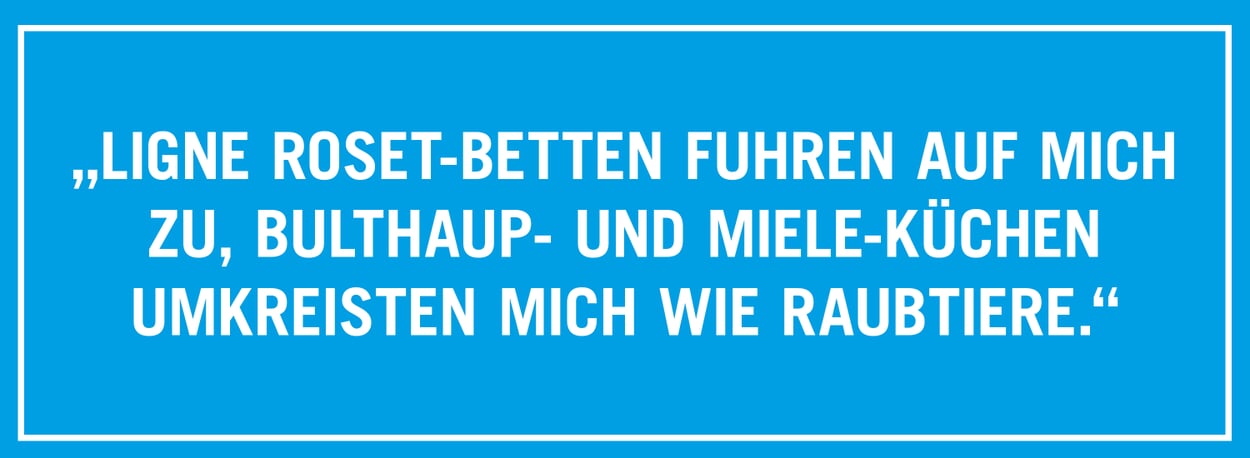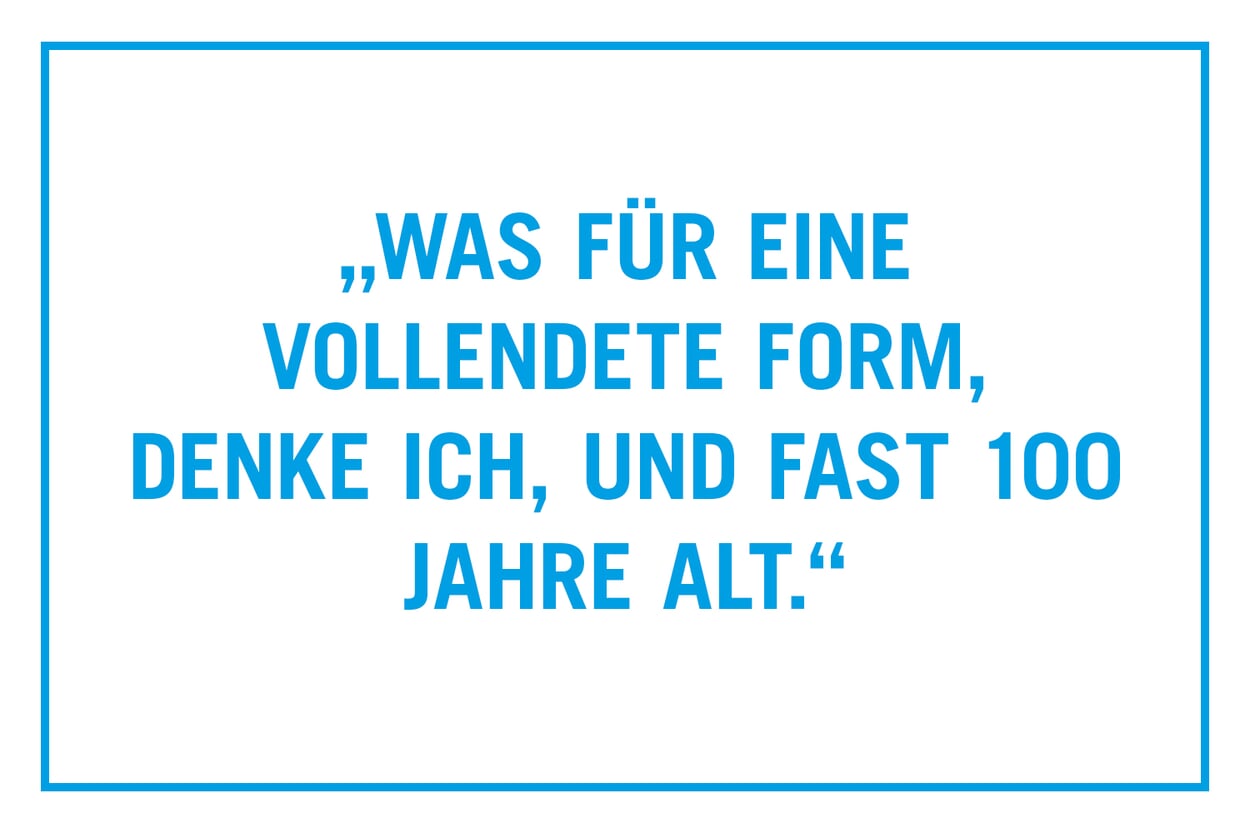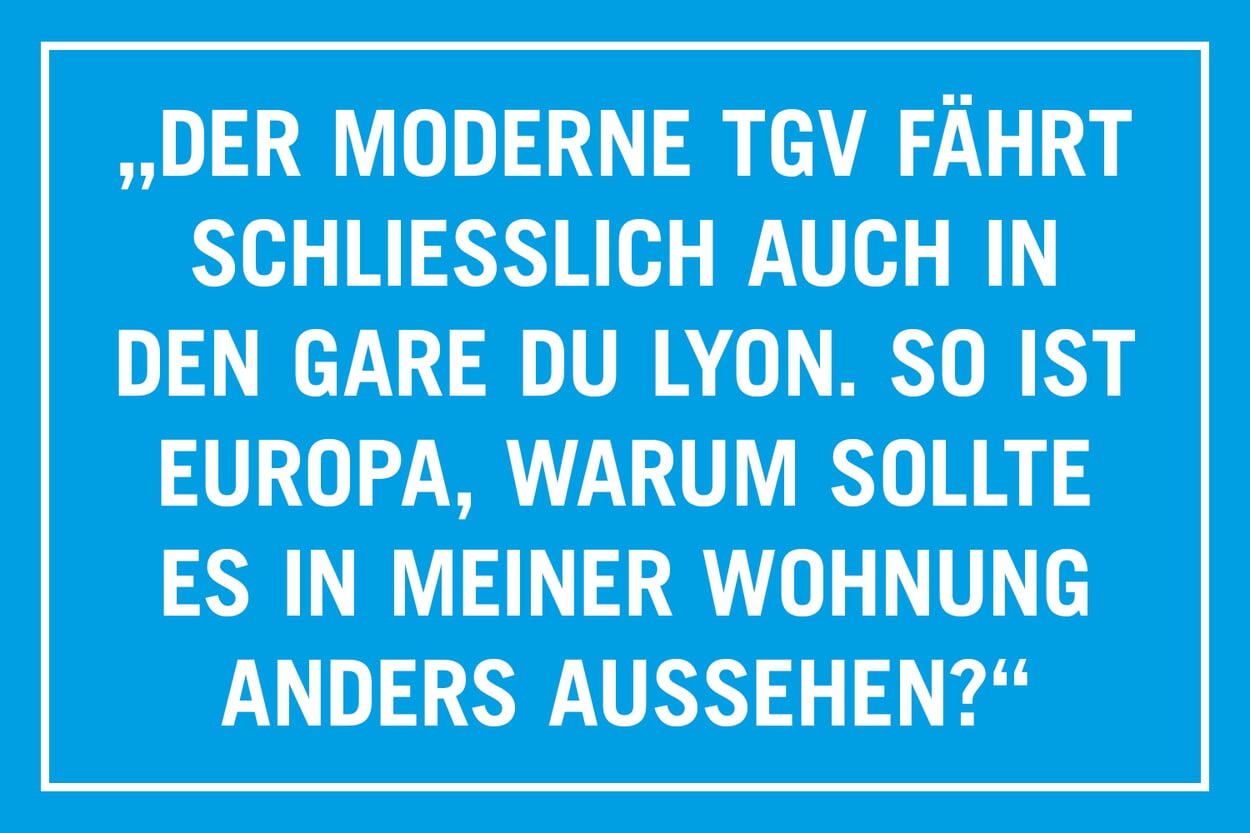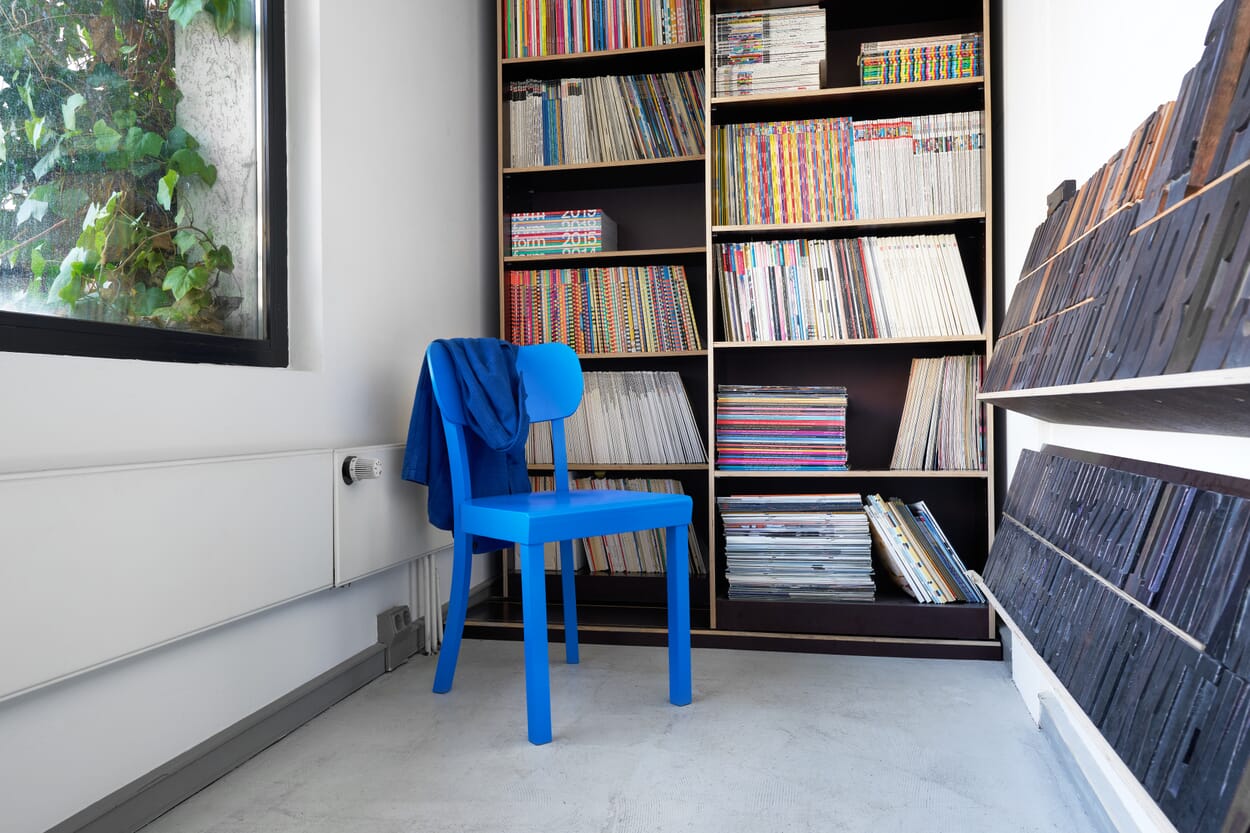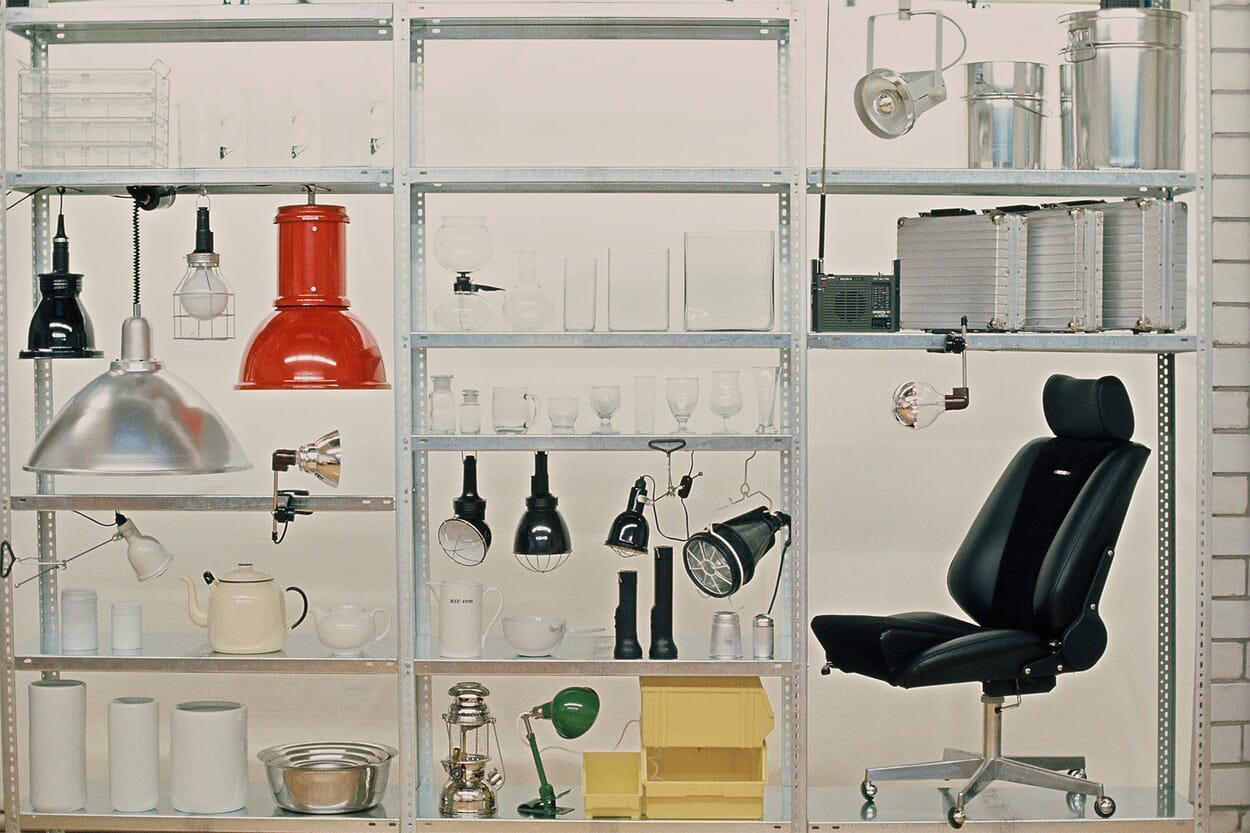Design history(ies)
THE CONTAINER STORY
ADRIANA ALTARAS
The story began - as usual - with a death: my aunt. Italy. The apartment dissolved. On a Wednesday morning, the furniture arrived in Berlin by freight forwarder. Notification from customs. A huge red container. A small sticker, the writing is blurred, my name. Furniture for me. For me alone. Beautiful furniture. Antique to very antique. 16th century, 1786, 1820 and so on. Dark woods, lots of inlays, great craftsmanship. But what was I supposed to do with it? My apartment was beautiful. I really liked it, the empty spaces, the tidiness, somehow classy, but still homely. The way modern apartments are today: modern apartments for modern people, clarity, practicality with elegant details, no kitsch, a few extreme color accents. Well, you don't really know where to sit. But is that so important? Customs gave me the furniture without any formalities. And now I had a problem: a container full of the past, full of history. History in wood. The alternative was: a museum full of Louis Quatorze, walk-in with oversized felt slippers or "Schöner Wohnen" loft aesthetics in white lacquer. Both neat, tidy and dust-free. Who drags their childhood dining table behind them? The living room table around which you chased the dog, engraved the row of 6 with a kitchen knife and secretly rubbed the Sunday gravy on?
No, you don't do that. Sheer sentimentality, childish weakness. It's almost like moving back home, regression, going back to Badstrasse. I closed the container and parked it at Zapf Umzüge: my red one among all the orange ones. Unable to make any further decisions, everything went well the first night. But by the second, I was already dreaming of stylistically perfect interiors: Ligne Roset beds drove towards me, Bulthaup and Miele kitchens (the ones in that great red!) circled me like predators. Walls of cupboards opened and closed every second. I flew over wonderful reclining landscapes - and couldn't sleep a wink. The following night, I was locked in the Stilwerk. Lamps of all models hovered over me like exotic insects, grabbing at me, threatening me - only they didn't light up. Finally, I dreamt of an empty room. Incredibly beautiful. Infinitely lonely. An existence without furniture.
I was emaciated, had circles under my eyes and no concealer would help. Something had to be done! I had the container unlocked. And there they all were, as if they had been waiting for me. Like relatives - only less reproachful. The little brown one from Poltrona Frau: what a perfect shape, I think, and almost 100 years old. He seems to be inviting me in. I sit down gingerly. God, it's so comfortable! I get my feet on the floor, a rare occurrence for me with Central European designer furniture, no compressed spine, no slipped disc! To the right is a Thonet bench, to the left two matching Thonet armchairs. A genius of a "creative director" who invented this seating furniture. In the mild autumn light that falls into the container, they appear light and stable without being made of aluminum, tubular steel or Flexiform.
Off! Enough! The end! I will go. Forever. I'm leaving everything behind me: a stylistic dilemma, being torn between aspirations and the past. Out! Maybe I'll take the little Olivetti with me, the red travel typewriter. It was given to me by Zio Giorgio, my uncle from Mantova. I was 5, and the red Olivetti was the smallest, lightest, smartest and most modern thing there was back then: the red Ferrari of travel typewriters. Nobody writes on a typewriter anymore, I know. I could show it to my sons if need be. People wrote on them back then. To take with you on your travels. The typewriter for Tuscany.
Yes, yes, nobody goes to Tuscany anymore, Sri Lanka, Seychelles, Dominican Republic - and there's internet everywhere. I'll still take the Olivetti with me, and if I don't write on it, I'll sit on it. A year has passed and there is life after death, even with furniture. It's a life of wild mixes. The Philippe Starck bathtub on the Berlin tiles, the MacBook on the Victorian folding desk. Upstairs, I struggle with emails, text formatting and layouts. Below, the desk reminds me of another time. Which wasn't necessarily better, but which belongs to me. After all, the modern TGV also runs into the Gare du Lyon. That's Europe, why should it look any different in my apartment? Two months ago, my old mother moved in with me, she brought a little dog, a Bolognese, and some crockery from the Austro-Hungarian era. Should I put the puppy, the mother, the Rosenthal china and all the silver in the container? In the attic of history? The puppy isn't quite house-trained, but so what? We all have a great time. The author, director and actress Adriana Altaras was born in Zagreb and lives in Berlin. In the 2008/09 season, she is staging the world premiere of her play "Der Fall Janke" at the Hans Otto Theater in Potsdam. In the film "The Countess", to be released in spring 2009, she plays alongside Julie Delpy. This text is an excerpt from the book "50 Jahre 50 Produkte - Designgeschichte(n) erzählt von MAGAZIN", which will be published in spring.
This text is an excerpt from the book "50 Jahre 50 Produkte - Designgeschichte(n) erzählt von MAGAZIN", which will be published in spring.
MAGAZIN1971
The book for MAGAZIN! 50 years of MAGAZIN encourages a special look at themes and products, stories and current affairs. Founded in Stuttgart in 1971, MAGAZIN has experienced and written history. Companions and contemporaries, product designers, customers and lovers of the brand have their say on what has happened. A collection of essays, e.g. by Sibylle Berg on "Schöner Wohnen" and Maxim Biller on "Erinnerungen von Morgen", meets contemporary topics on product design, design and furnishing. Supplemented by a special look at 50 exemplary products from the history of MAGAZIN. Including the popular and the little-seen, highlights and the inconspicuous, the favorite products of MAGAZINS and their background stories. 21x25 cm, 248 pages with many b/w and color illustrations, bound in fine linen Duchesse. Now available.
DISCOVER MORE
We are celebrating 50 years of enthusiasm for our products and selected range. Look forward to glimpses into our digital and analog shop windows.
In Stuttgart, 50 years ago, MAGAZIN was born. A store, an idea, a program formed an innovative company with stubbornness and perseverance.



